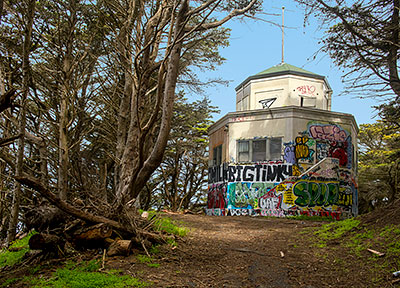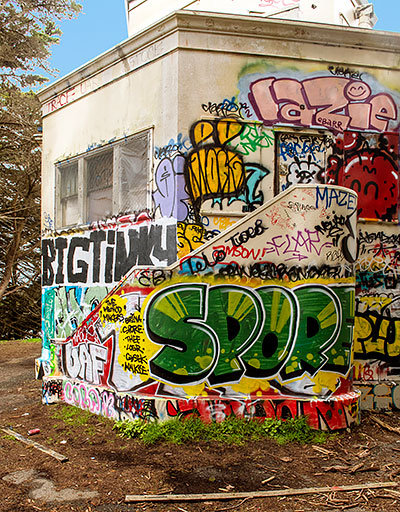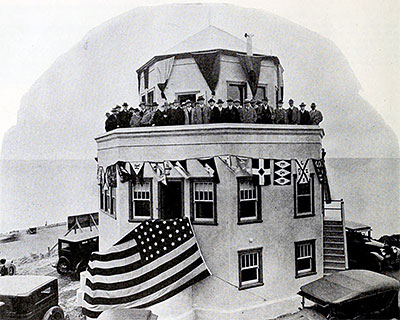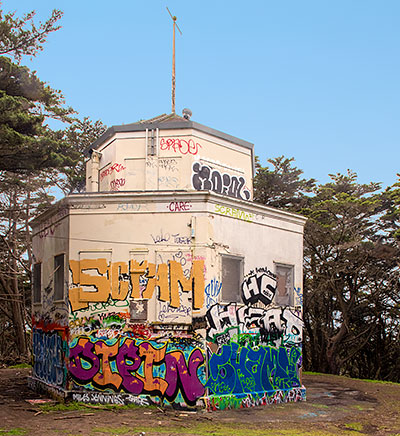San Francisco Points of Interest
 Trees hide the lookout station which is accessible by a single path northwest of Battery James Chester.
Trees hide the lookout station which is accessible by a single path northwest of Battery James Chester.

8 April 2023
(Click Photos to Enlarge)
 When the lookout station opened in 1927, it had an unobstructed view of the Pacific Ocean and the Golden Gate strait.
When the lookout station opened in 1927, it had an unobstructed view of the Pacific Ocean and the Golden Gate strait.
Photo Courtesy Western Neighborhoods Project
(Reference marine_exchange_sfbusiness_1927)
Trail in Lands End
Built 1927
37°46'57.9"N 122°30'36.2"W
For more than a century after the 1849 Gold Rush, San Francisco was the major port on the West Coast. Ships arrived daily from all parts of the world carrying both practical cargo and luxurious cargo. Coal, lumber, bricks, nails, livestock, barrels of salted meat, rice, coffee, tea, cheese, sugar, coffee, limes, bananas, oranges, lemons, coconuts, spices, beer, whiskey, champagne, sherry, brandy, claret, burgundy, pisco, cigars, cards, candles, clothing, furniture, wagons, carts, fishing boats, steam engines, kits to build entire houses.
During the Gold Rush, word of a ship's pending arrival was relayed by a series of semaphore towers between Point Lobos, overlooking the Pacific Ocean, and Telegraph Hill, overlooking the Port of San Francisco.
California's first telegraph line was strung between Point Lobos and Telegraph Hill in 1853 to replace the semaphore system.
In 1889, Merchants Exchange built a shingled lookout station where the USS San Francisco Memorial stands today. This structure remained in use until 1927 when it was demolished and replaced by a new octagonal building nearby. This is the building that survives today.
The lookout and his family lived on the first floor. The watch room upstairs contained a huge telescope and telephone and radio equipment. In 1940, a WPA-commisioned history of San Francisco described the station's purpose as "to report vessels entering the harbor to their owners, the Immigration Department, the Customhouse, the press, supply houses, taxi companies and hotels. Craft are identified after they pass the light-ship near the Farallones."
Source: OutsideLands.org and Wikipedia.

Octagonal houses were a national fad from 1850 until about 1870. Two octagonal houses survive in San Francisco: the Feusier House built on Russian Hill in 1858 and the McElroy House built in Cow Hollow in 1861.
